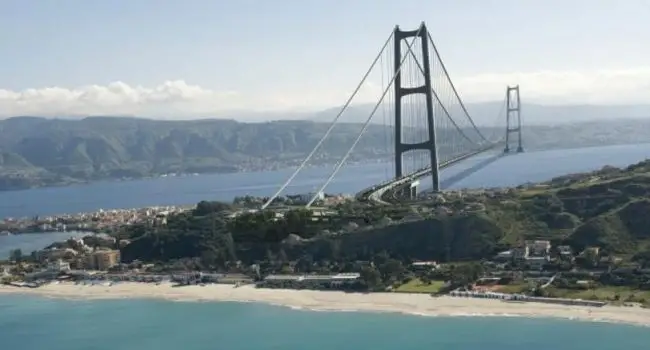Plans for the construction of the Strait of Messina Bridge in Italy have been revived. An Italian-led consortium is most likely to be awarded the contract to construct the $10 billion ($11 billion) bridge that will link Sicily to the mainland. This is according to Infrastructure Minister and Deputy Prime Minister Matteo Salvini.
The initial European bridge tender was won in 2006 by a consortium led by the Italian company Salini Impregilo, now known as Webuild (WBD.MI). However, the plan was later shelved due to cost issues.
Rome’s new nationalist administration has revived the project. Although many foreign businesses are interested, Salvini said he believed the original Italian group could retain the contract.
Messina bridge contract
Salvini stated at the Foreign Press Association in Rome that the government had received expressions of interest from all over the world, including China. However, the goal is to have Italian businesses build the bridge.
Earlier in April, it emerged that China Communications Construction Company had an interest in the Messina Bridge project. This was revealed in an interview with the group’s Deputy General Manager, Pei Minshan.
Read Also: Refurbishment work starts on Chepstow Viaduct bridge in UK
Although Salvini expressed happiness that there was interest from a wide range of international parties, he added that the 2006 tender winners “are the ones who will probably continue with the final version of the project.”
Webuild had no comment on the minister’s remarks.
The bridge to link Sicily to the rest of Italy
The desire to link Sicily to the rest of Italy dates back to the early Roman era. Several Italian governments have experimented with the idea in recent decades, but they have yet to succeed.
Salvini stated that the proposed suspension bridge has a record-length central span of 3.2–3.3 kilometers (2.0–2.1 miles). It would also be earthquake- and wind-proof. Salvini expressed confidence that construction could begin in the summer of 2024.
He added that the government discussed other financing options with the EU transport commissioner and the European Investment Bank. The bridge was not eligible for funding from the post-COVID recovery plan supported by the European Union.

Leave a Reply